Synoptic Project - Pre-Production
- jesskesson
- Mar 12, 2020
- 8 min read
In pre-production, I had various tasks that I had to complete before we could go into production. One of these was designing the characters. Since the characters are all inspired by ancient Asian fashion and mythology, it was an interesting job to make sure they were all individual enough to stand out (even the background characters and characters in the cutscenes).
Surprisingly, the first character I concepted was the kitsune, not the ninja. I wanted to establish a style while drawing the kitsune, and I wanted it to be clear what it was. Kitsunes are one of the most well-known icons of Japanese mythology, and even people who know little about said mythology will know it. So I wanted to make sure it was clear what animal it was, and display her personality in how she is drawn.
After this, I went on to concept the ninja with the kitsune on his shoulder. This was something I wanted to have to demonstrate the relationship between these two characters. I knew that the colour pallet for the ninja would mostly be shades of black, so having the kitsune on his shoulder is a good separator.

This is the finished character model of Aki made in photoshop. I made it with block colours, and made sure each body part was in a separate group. This is so that the groups can be merged and then used in After Effects to create the animations.
The last characters I concepted were the enemies. It started off as me trying to come up with ideas to what spirits other than the kitsune would look like, I but ended up liking them so much I decided all of them would be enemies. Naturally, since the game is only a vertical slice, only one enemy is needed.

It was difficult to decide which villain would be most interesting to feature in the game, so I decided to go off the logic that it would be the weakest of the four first. My first instinct was to have it be the character on the far right (nicknamed 'Pheasant' at the time), since his character in my mind was the youngest in the group, and he looks up to the others because their more powerful. This would also mean he acts tougher than he actually is. However, I thought this was done too frequently with villains, and I wanted the main villain in the vertical slice to be different.
This was where Chan was created. Since he is inspired by a toad, he has a crouch position, and loos a bit sluggish. I thought this was an interesting choice for an enemy, so he became the main villain of the vertical slice.
One of my other jobs was to solidify the story of the game. As someone who doesn't play games a lot, I have a preference for more story-oriented games. However, I know the rest of the people in the group don't agree, so I reigned in the story as much as possible.
The first thing I did was write up a basic outline of the story with gameplay mechanics included whenever they were necessary. I also added a small section about items that will be used in the battle segment of the game, as well as possible attacks and moves each of the three characters could have.
I thought it was important to get as much information down early, so then it could be referred back to and changed easily.

The next thing I did was write up the script for the first cutscene. It was tough to get the tone right, as I wanted it to be light-hearted, yet informative. To do this, I decided it would be better to establish the story through the different character's personalities, rather than just have them explain it in a plain and boring way. It brought a lot more fun to the table, and I'm settled on the script as of right now.

I wanted the characters to contrast and compliment each other, so I made Jing into this mischievious Fox Spirit who is more interested in her own goals, but is willing to negotiate if it helps her in the long run. I thought this was an interesting choice, since those aren't traits a hero character usually possesses. It's usually an antagonist or an anti-hero that is the selfish one in a story.

Aki, the ninja, on the other hand, is hard-working and lacks confidence in himself. At the beginning of the cutscene, he's essentially given up hope of becoming a better ninja. He holds the honesty and determination that any typical hero in a story needs. His only weakness is that he's unbelievably clumsy, which causes his self doubt and triggers the start of the story.

The next thing to do was decide how the cutscene was going to be shown. I decided on using Adobe After Effects to create a small montage of images whilst the dialogue is being displayed. To do this, I decied to do a pre-storyboard plan, stating where any changes were taking place. There are storyboards for both the cutscene on another blog:
Although the game has started, it would be odd to have the characters chit-chatting away and then going completely silent as a narrator tells the player how to play. Instead, I kept up the tonality of the characters, and had Jing teaching Aki how to perform all the mechanics in the game. Since part of the deal she makes is that she'll teach him how to be a ninja, it only makes sense that she'd be the one leading the tutorial. I tried to keep the lines as short as possible, but sometimes I felt it was necessary for a bit of conchat between the two.
Another thing I made sure to do was take into account that a player has free-will, and they will sometimes not listen to instructions. This means having pieces of dialogue that play if the player has done something wrong or not done it at all. I also did this for the main level as well.
Writing a script in order is somewhat important, as it gives a better idea of a timeline, and helps to preserve continuity. One of the things I made sure I didn't do was mention something early on, then have the characters forget about it, or vice versa.
In the main level, I didn't have much information about what would be there and what wouldn't. After Asking David (who is in charge of designing the layout for the main level) about it, I got the rough image of ascending up to the top of a pagoda, perhaps picking up some information about the Fire-Rat Fur Robe (the objective of the level) from the guards that would be patrolling around. With this knowledge, I put together a script with a lot of freedom to allow for any changes made.
Another character is briefly in this level. I did a character board on her, but the main gist of her is that she is the lady who owns the manor the player is sneaking into. I created her character model different than the other two because of her minor role. Instead of being in different pieces, she only in one piece, since she will only be standing still and running away. It was also a case of not have much room for movement with her clothes, which couldn't be designed differently without looking out of place. There is a character board of her design that I have produced:
At the beginning of the battle, I decided to put a bit more information in, as I needed a way to introduce the foe of the battle, Chan. I thought it would be an interesting chance to create a new type of character. When a villain is introduced, their intentions need to be one of the first things established (this doesn't have to be their full intentions, just that they motivated into being opposed to the protagonist). Usually, a villain appears and is either riled up to fight, or confident that they will win.
Due to time restraints, the battle level may not be made, thus meaning I had to rewrite the script. Luckily, with Chan's personality, it was easy to make changes.

With Chan, I didn't want him to be like other antagonists. I wanted to give his character more depth by giving him unstereotypical villain traits. Instead, I gave him a sense of lazily and lacklustre determination. I thought it was fitting for him to be a stereotypically energetic animal (a toad) while actually being the opposite. I also used the fact that both of them are spirits to its fullest potential, and had Jing introduce Chan as a character more; this includes parts like prompting him to enter and even sympathizing with him. Chan could be introduced not only through his own actions, but by Jing's.

This is what Chan looks like. I tried to make him look a bit sloppy by giving him patches on his kimono.
Because the controls are different in the battle, it meant that a lot of the script will need to be at certain points only, like the beginning of the battle to explain the controls, the first time opening either of the battle menus, the midpoint of the battle and when Chan is defeated.

The final thing to do about the story was the final cutscene. Since this is a Synoptic Project, this isn't the whole game. Instead, it's just the beginning, and the final cutscene is essentially the cliffhanger to the rest of the game. This meant the cutscene had to conclude some of the plot points, while also setting up new ones.
I manage to get it quite short, so that it won't be impossible to create. Since both the cutscenes will be made the same way, I only have eight images to create, which have already all been planned and storyboarded. I will also have to create a small 'thanks for playing' image at the end, which could act as stationary credits for the project. This won't be in the cutscene, and could instead be programmed to display at the end of the game.

These are the images for the final cutscene. One of them is the same image as the first cutscene, which I purposefully worked out to save time.

Another thing I did was create a small graph of all the animations we'd need. I realised that a lot of characters needed animations for similar things. This gave me an idea. I could draw up keyframes for each animation, then we could use them on different characters. I think this would save a lot of time, and would allow us to do other things for the project as well.
During pre-production, Louis and Charlie started on creating the levels. Charlie also created a rough menu screen for the game. So far, these are both looking great, and I can't wait to see what the tutorial level (which Louis is in charge of) turns out. David has also been working closely with the all of us to create a design for the second/ main level. I've let them know that changes can be made to the script if so needed, so I can't wait to see how they use their creativity.
In production, I'm going to continue with creating the assets (characters and items), and draw out the animations. This will be done at the beginning of production. Mid-production will be when animating will most likely begin/ be on its way. I also need to make a start on creating the cutscenes. This means colouring and perfecting all the images, and putting them into After Effects. This will most likely happen at the later end of production. Something that will be going through the entire production phase will be communication with the rest of the team.
I realise that the reason some things weren't going right or we had to change things at short notice was because we never sat down and talked about what we would each be doing that day. This is something that I want to be doing at least twice a week, as it will help all of us keep a better track of what everyone else is doing.
A cause of this is that while I understand the artistic side, I'm not involved in any part of the coding, thus meaning decisions are going to be made by Charlie and Louis without the rest of us knowing. The same can be said for me, as I often don't communicate what I'm doing in full detail to save time. By the end of Production I want everyone to at least know the synopsises of each part of the script and to have an animatic made for at least one of the cutscenes, as well as most of the still images completed for them.

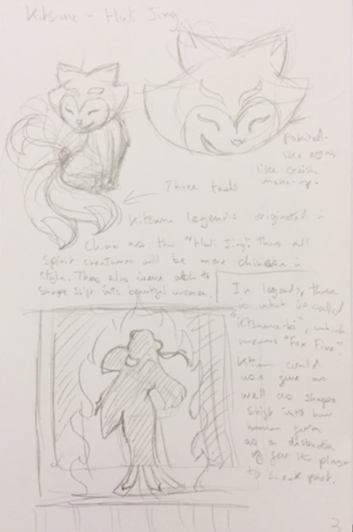












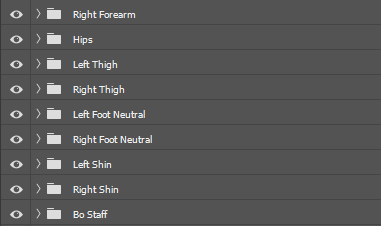

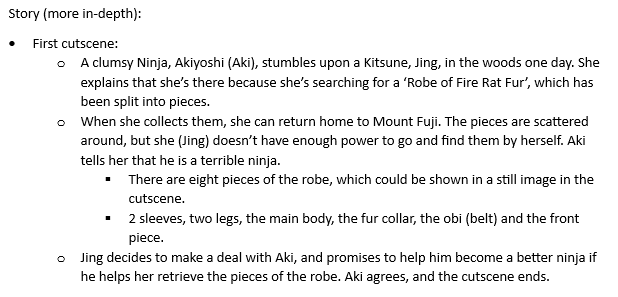

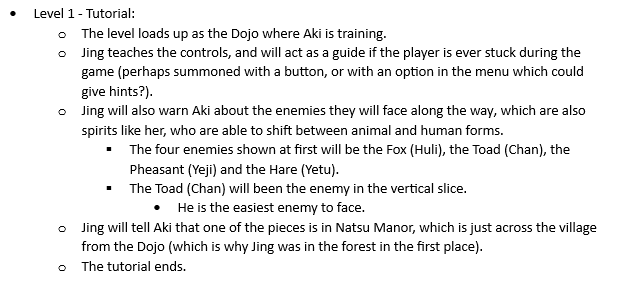

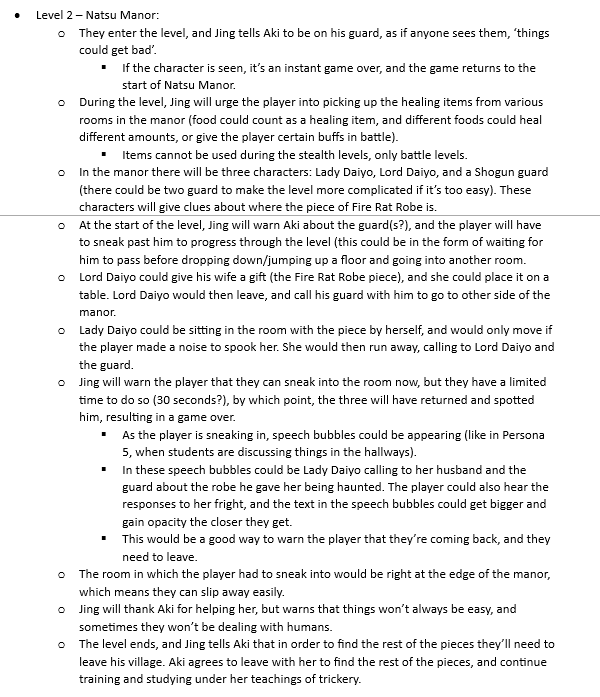

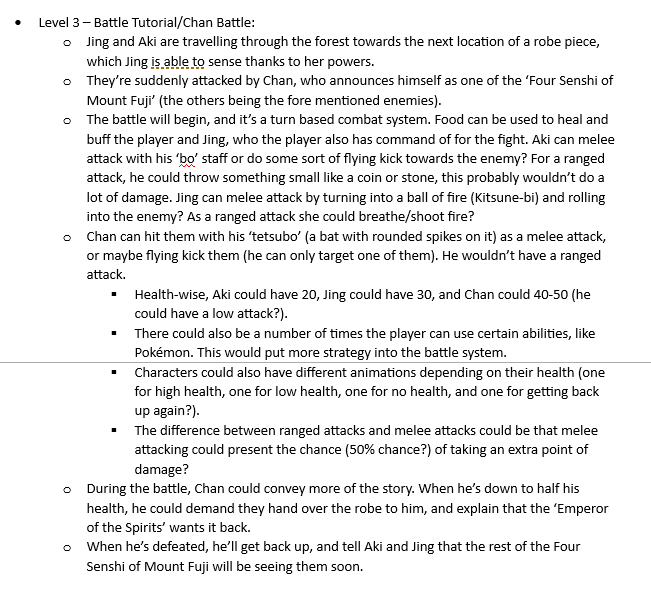

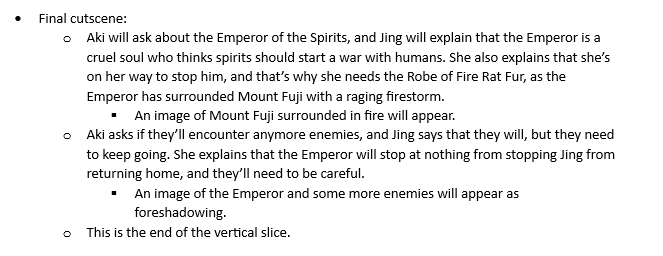
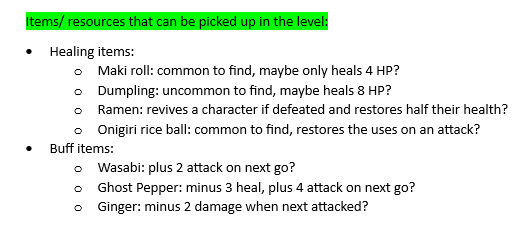

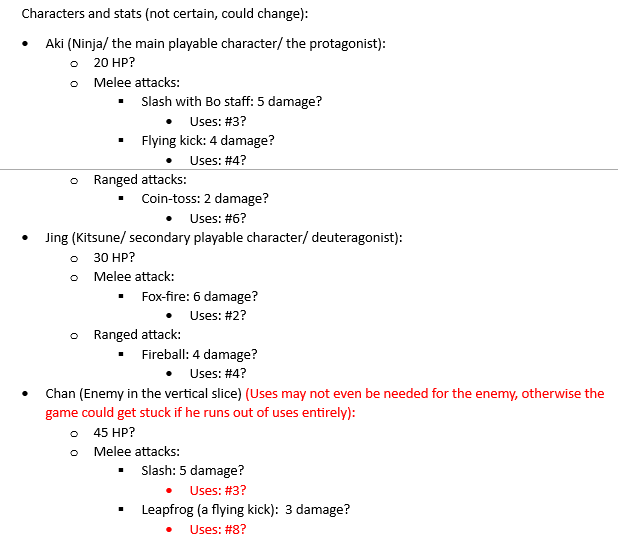

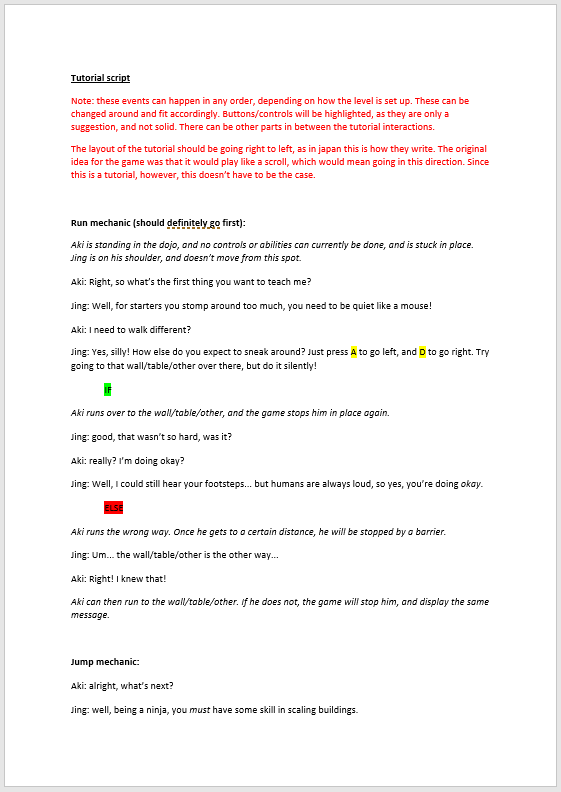

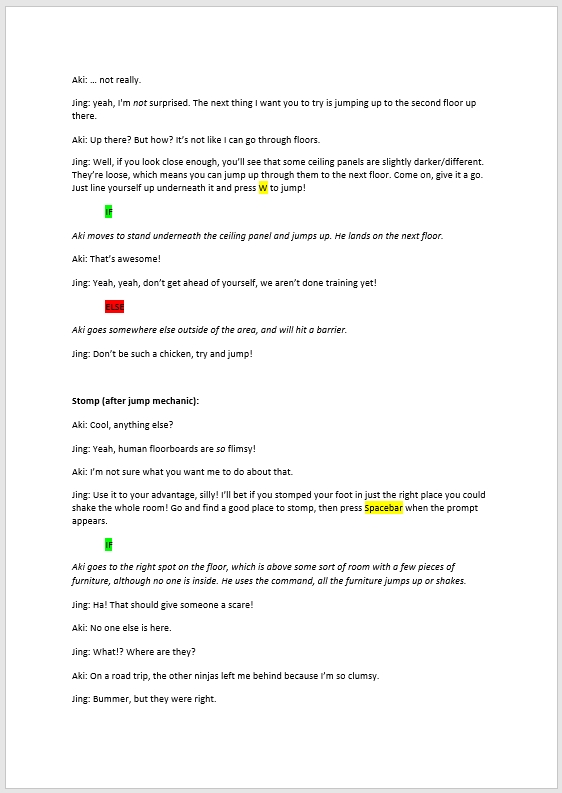

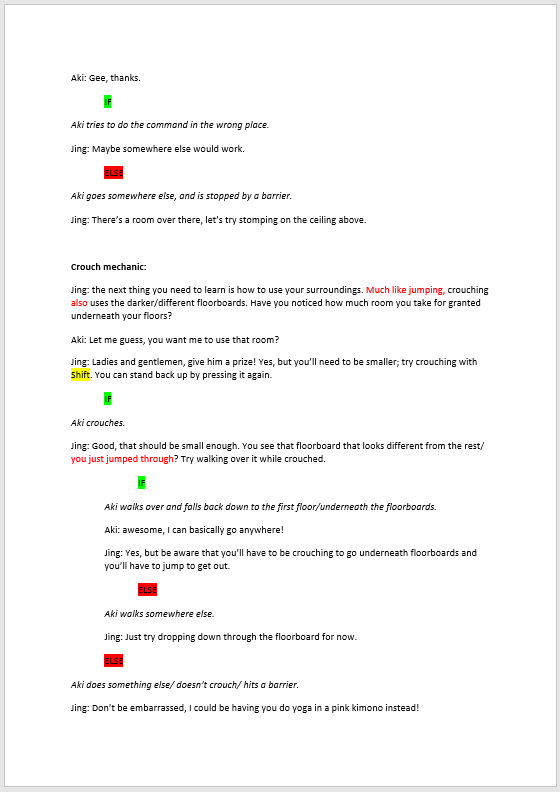

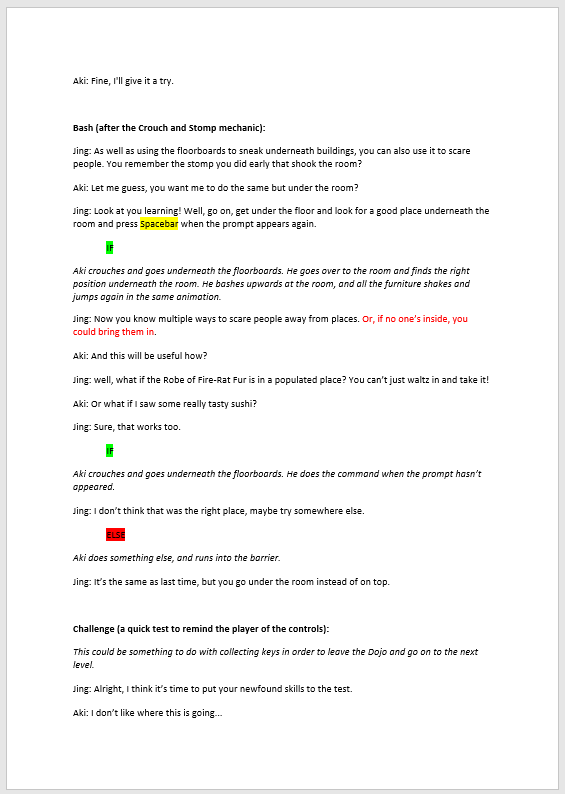

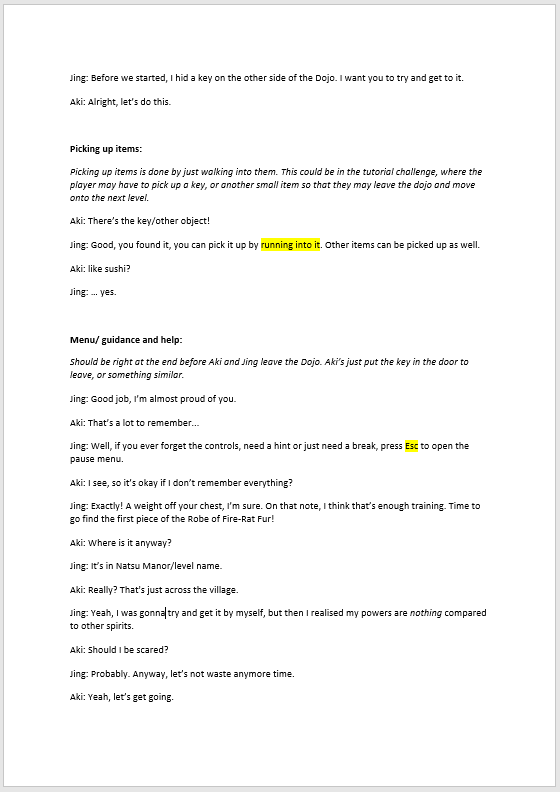

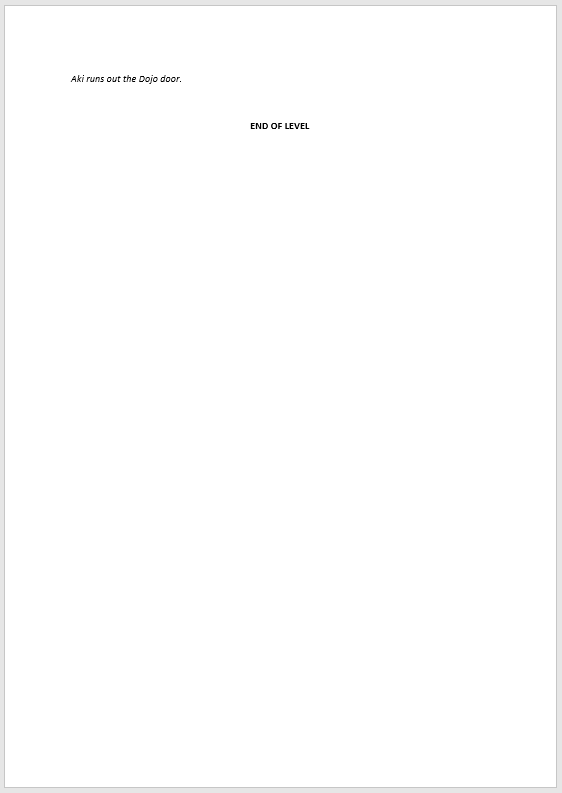

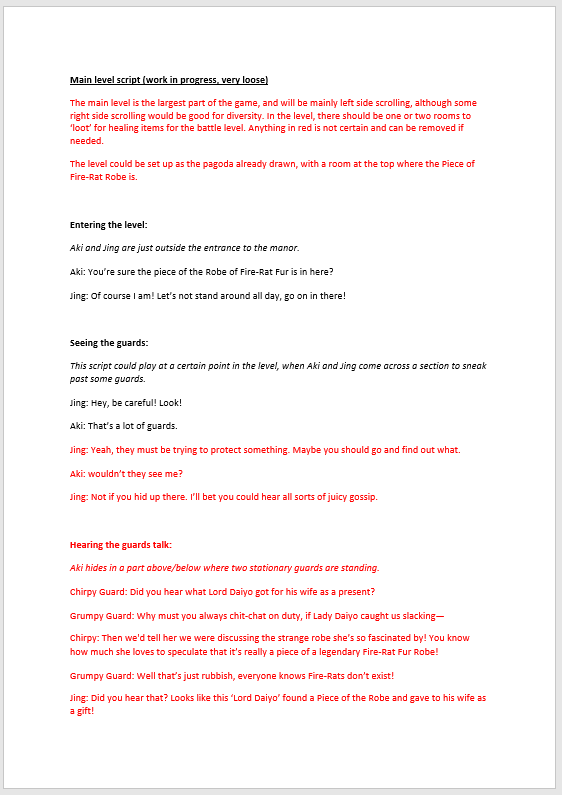

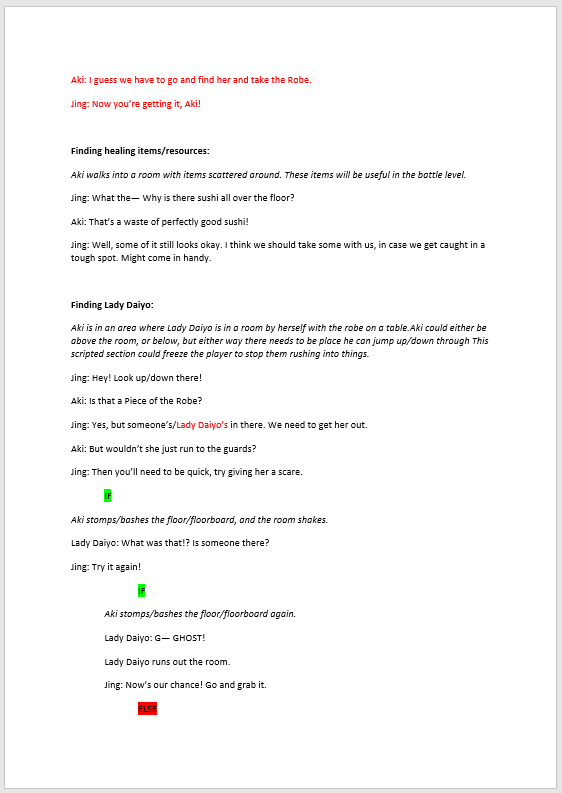

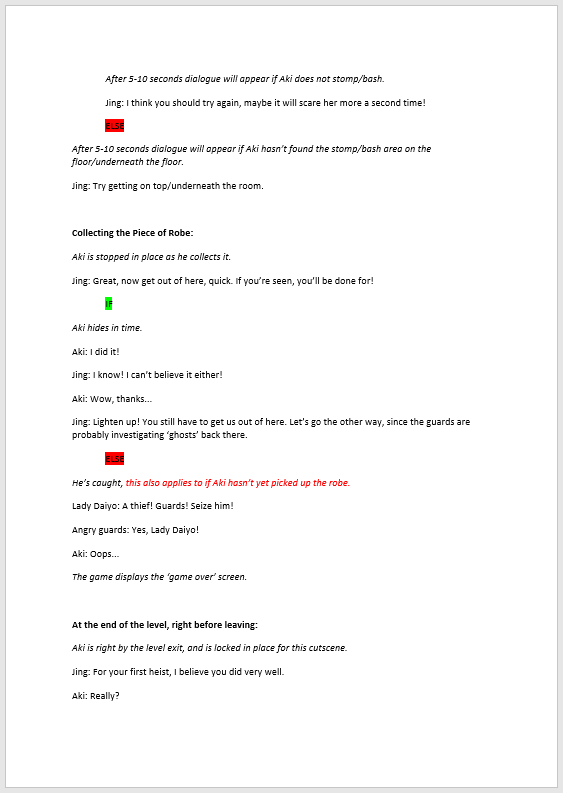

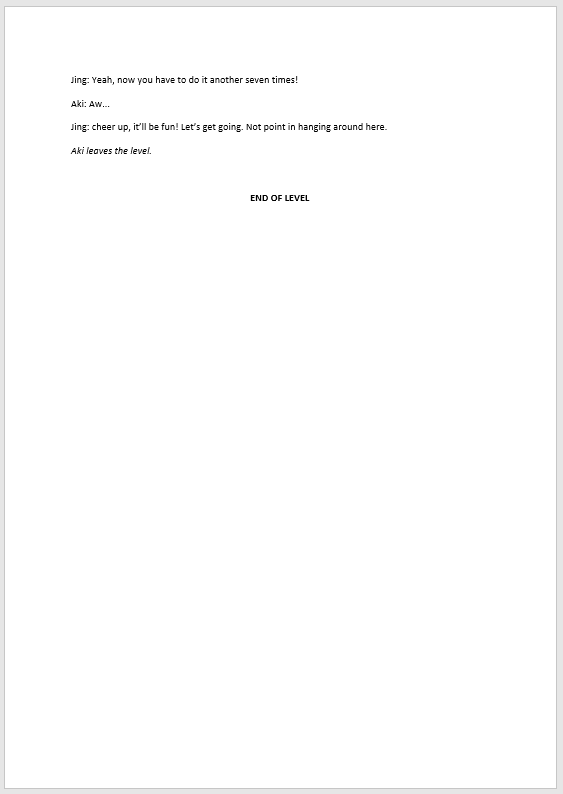

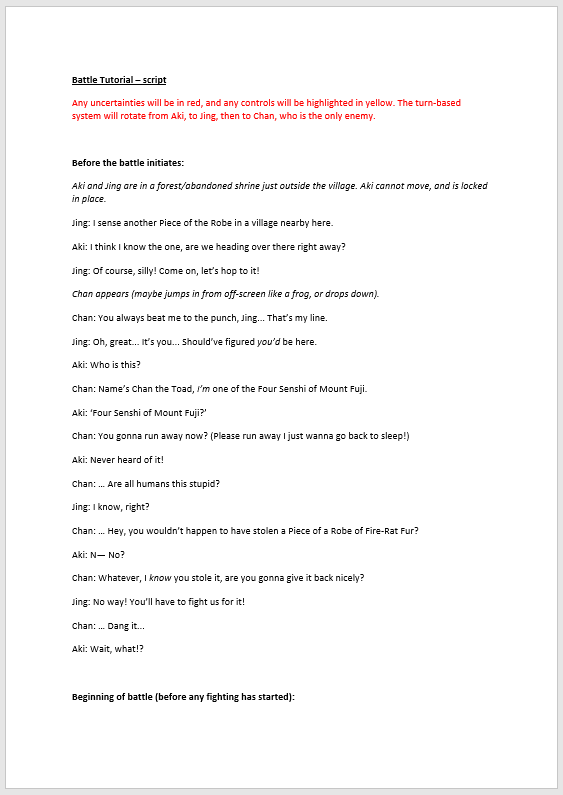

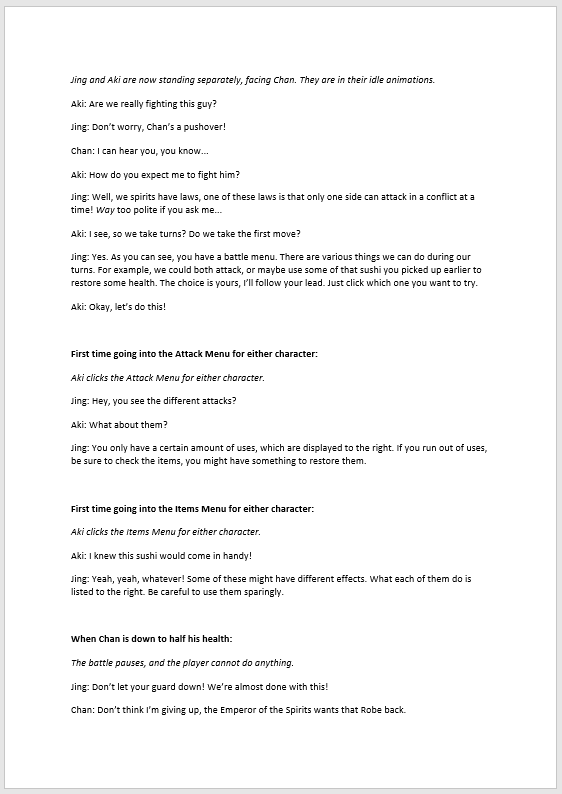



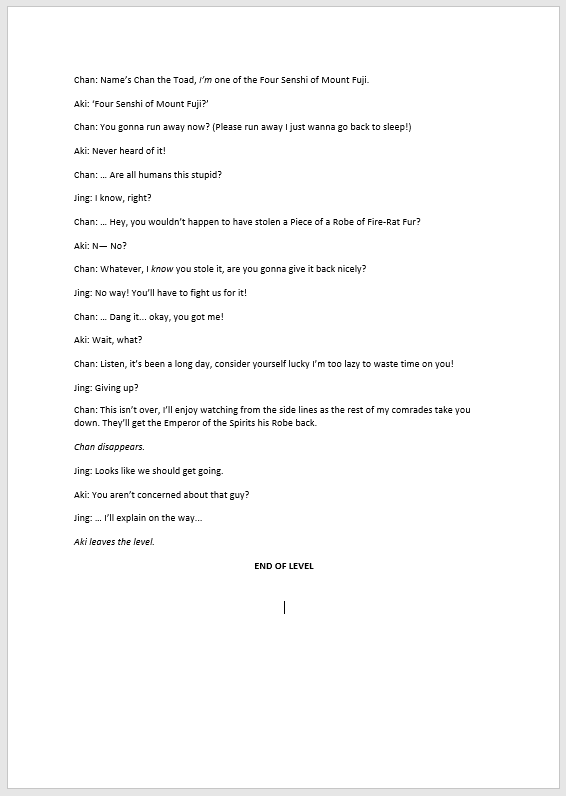


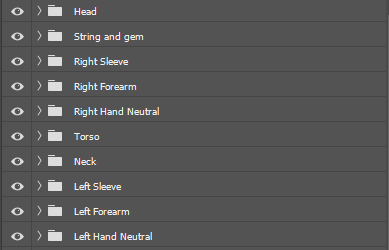
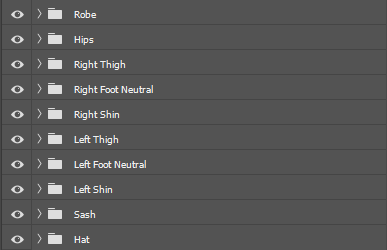





















Comments